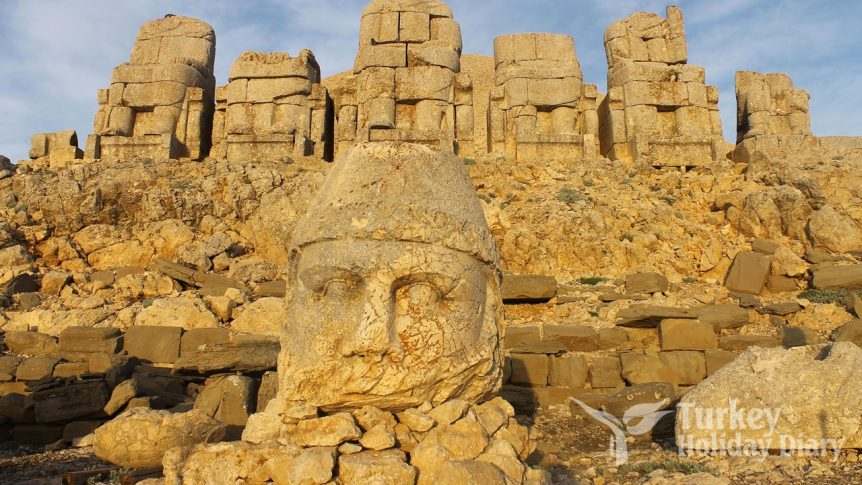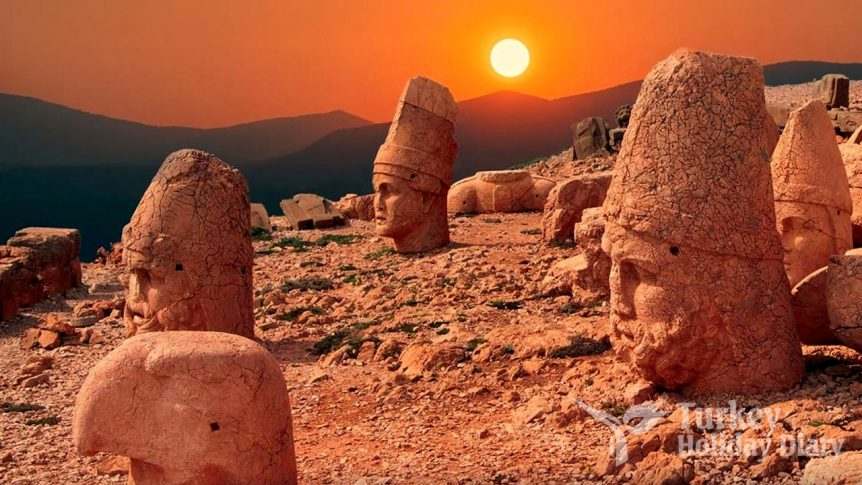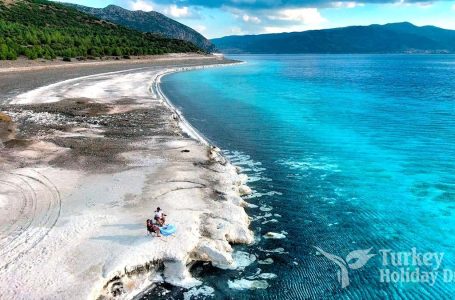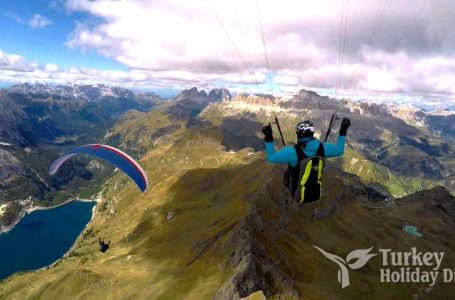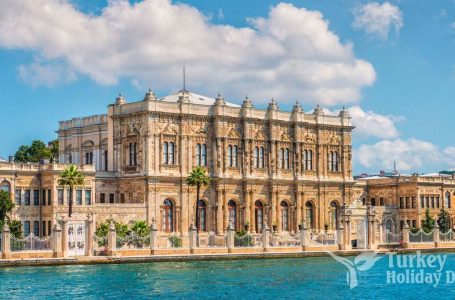Mount Nemrut, located to the north of Adıyaman’s Kahta district, is known as a part of the Taurus mountain range. Nemrut Mountain is also known for its historical remains, which are located at the summit. Thanks to the worldwide interest in the relics, UNESCO’s “World Heritage List” entered on December 11, 1987.
After the dissolution of Alexander the Great, a new kingdom named Kommagene was established in Antiochus (69-34 BC), north of Syria and the Euphrates river. It is believed to be the tomb of Antiochus I. Antiochus in the temple located at the summit of Mount Nemrut, located within the boundaries of Commagene. At the 2150-meter peak of the mountain, there are gigantic sculptures representing seven gods, representing five gods. Some of the stone blocks surrounding the temple have a weight of 9 tons. At that time, it is still unknown how the stones are removed from Nemrut Mountain, which is not even in the way, in tons of weight.
The Mystery of Mount Nemrut
Until 1881, except for a few peasants, nobody knew the remains of the top of Mount Nemrut. In 1881, Charles Sester, an engineer in the road construction project in Diyarbakir, estimated that the first researches in the region were remnants of the Assyrians. And he submitted his research to the whole world. As a result of the information he received from Sester, Otto Puchstein, a German scientist and Charles Sester, a German engineer, first worked with a team of six. In the archaeological excavations in the temple, many historical artifacts were removed from the soil. Uncovering the Greek inscription found in the excavations, Puchstein discovered that the remains were belonging to the Commagene Civilization and were made by Antiochos the 1st King of Commagene. The inscription contains the secret of Nemrud Mountain and the laws of Antiochos.
The Secrets of the Sculptures on Nemrut
King I. Athiokhos was a king who aimed to unite all cultures and for this reason he was supposed to have made sculptures that would bring together the gods of other cultures. The inscriptions on the excavations clearly state which gods the statues belong to. From left to right these sculptures will be seen to belong to King Antiochos I, Fortuna Thyce, god Zeus (Oromasdes), god Apollo (Mithras-Helios-Hermes) and Heracles (Artagnes-Ares-Hercules).
The heads of the sculptures sitting on the throne were buried under the earth for years as a result of natural events that took place years ago and the destruction of other civilizations.
Our previous article Gülhane Park in our article titled Cankurtaran Quarter, Gülhane ve gulhane park provides information about.

